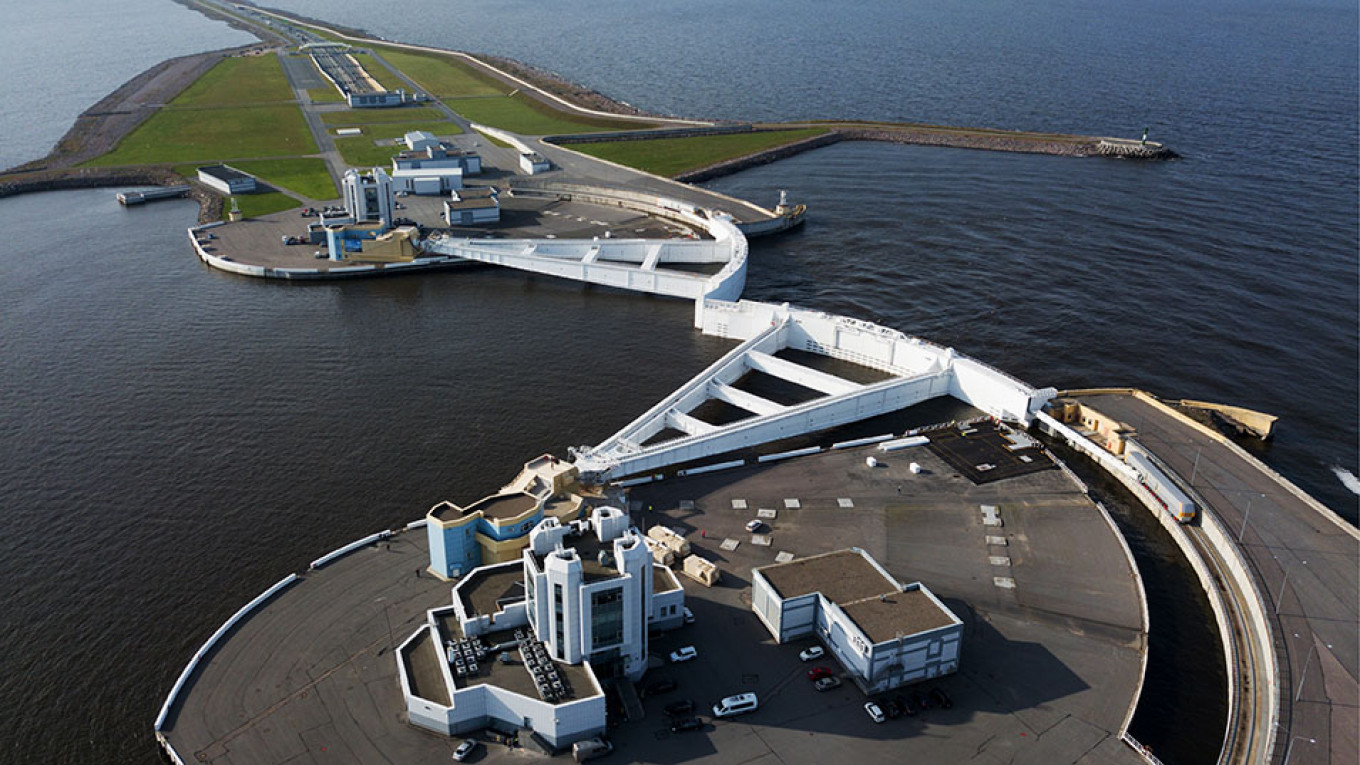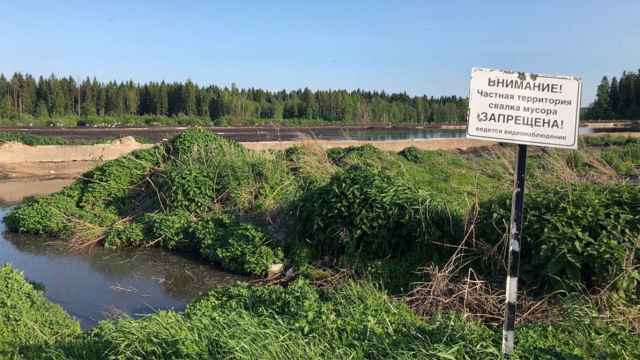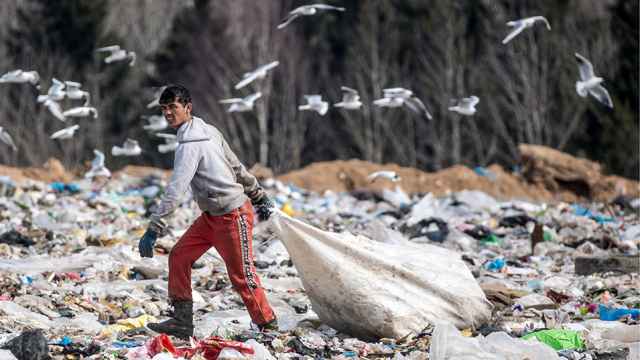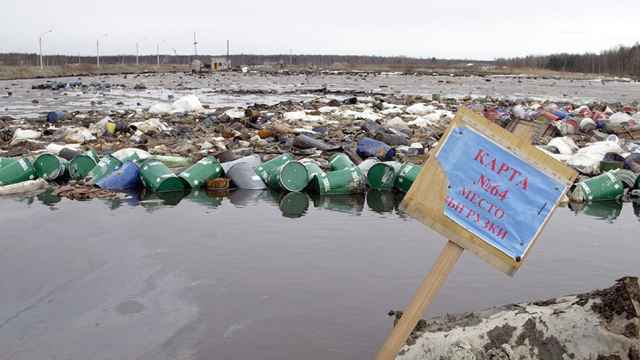In the cold, gray waters of the Gulf of Finland, 30 kilometers west of St. Petersburg, a giant wall juts across the bay. Completed seven years ago, it protects the city from an age-old danger: floods.
When storms approach from the west, the Baltic Sea is pushed eastwards into the shallow Neva Bay where the city lies. There, it collides with the fourth largest river in Europe by discharge, the Neva, causing water to spill over the riverbanks and overflow the hundreds of canals that crisscross the city center.
“When the floods happen, the wind knocks you off your feet and it’s hard to see anything because of the rain,” says Olga Suvorova, a press secretary at St. Petersburg’s Flood Prevention Facility Complex.
Over the past three centuries, the “Venice of the North” has suffered more than 300 floods, two-thirds of which saw water levels rise above the “dangerous” mark of 2.1 meters, according to Russia’s Hydrometeorological Center.
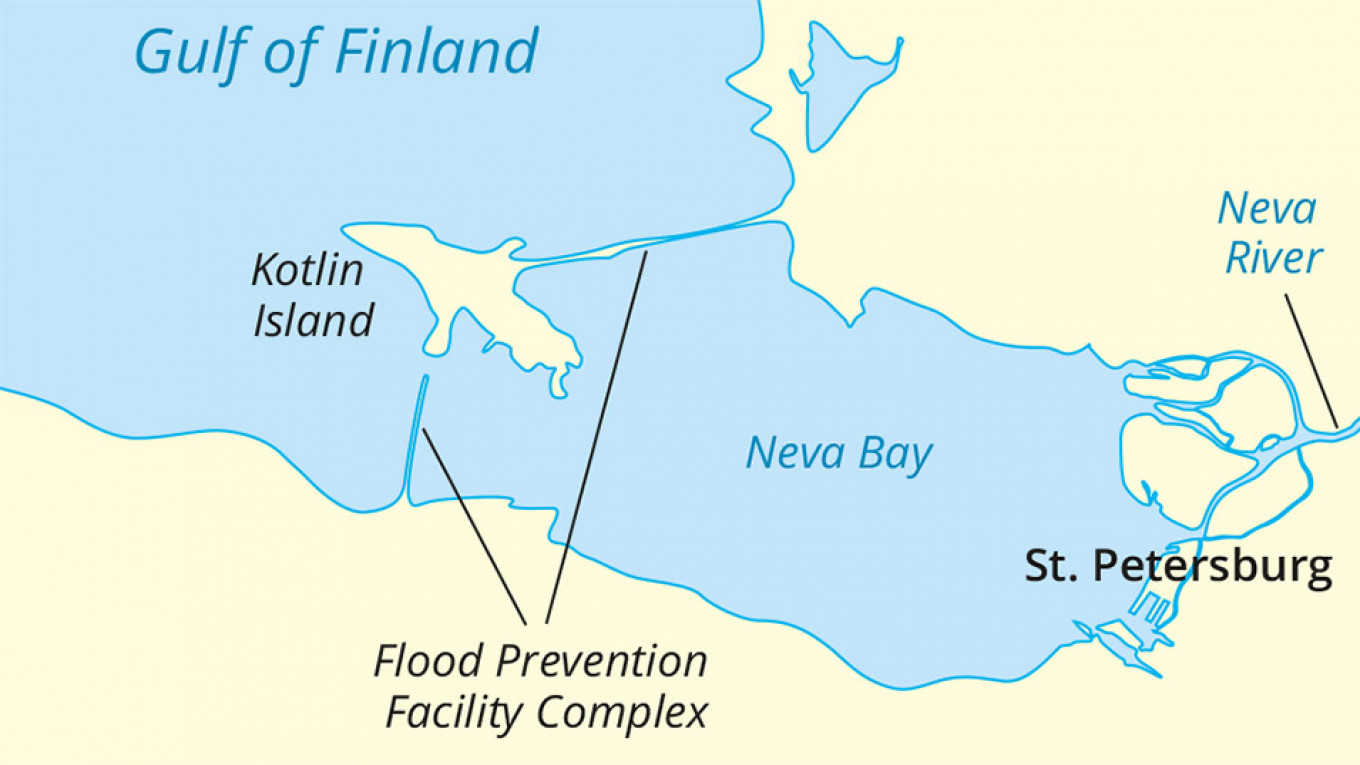
Three times — in 1777, 1824 and 1924 — water levels rose above the “catastrophic” level of 3 meters, causing hundreds of deaths and damaging thousands of buildings.
The first line of defense
While much of Russia remains skeptical about climate change, St. Petersburg can’t afford the luxury of stalling, as climate experts warn of an uptick in storm surges.
Today, the massive St. Petersburg Flood Prevention Facility Complex, a bulwark of reinforced concrete, steel and stone, which stretches more than 25 kilometers across the Neva Bay from the north to the south, is the city’s first line of defense.
The dam complex consists of 11 embankments, six sluices and two navigation channels, which allow ships to enter and exit one of Russia’s busiest ports. A highway runs along the top of the barrier wall, connecting the mainland to Kotlin Island at the center of the dam.
For most of the year, the floodgates are left open to allow the flow of water and marine life between the bay and the sea. But within 45 minutes of sounding the alarm, the sluices can be shut, ready to withstand the force of up to 11,000 tons of water pressing up against it.
“There’s nothing like it anywhere in the world,” Dmitry Drugachuk, the dam’s spokesperson, says proudly. “Not even in the Netherlands.”
There’s nothing like it anywhere in the world. Not even in the Netherlands.
While plans to defend the city from the sea were drafted as early as the 18th century, it took three centuries for construction of a barrier to finally begin in 1979. With the collapse of the Soviet Union, the project was abandoned, and it wasn’t until Vladimir Putin, a native of the city, became president that the plans were put back in motion. With European loans and expertise, the dam was finally completed in 2011 at a price tag of 109 billion rubles ($3.85 billion).
Four months after its completion, it was put to the test. In December that year, officials warned of an oncoming storm surge that threatened to flood one-fifth of the city and estimated the potential damage at 25 billion rubles ($374 million). “We were nervous. We didn’t know whether the dam could cope,” Drugachuk remembers. But the dam held its ground, and in the seven years since, it has prevented 13 more floods.
A rising threat
Vladimir Kattsov, a climate specialist and the head of St. Petersburg’s Voeikov Main Geophysical Observatory, fears the worst may be yet to come.
He cites a recent report by the UN’s Intergovernmental Panel on Climate Change that predicts sea levels could rise by a meter within the next century. “But other reports have said that this estimate is too conservative and we can expect significantly higher levels,” Kattsov says. In any case, the change will bring water levels closer to 1.6 meters — the mark at which a flood is officially declared in St. Petersburg.
Kattsov adds that changing weather patterns in the North Atlantic Ocean could see cyclones spilling over into the Baltic Sea, increasing the frequency and strength of storm surges in the Neva Bay.
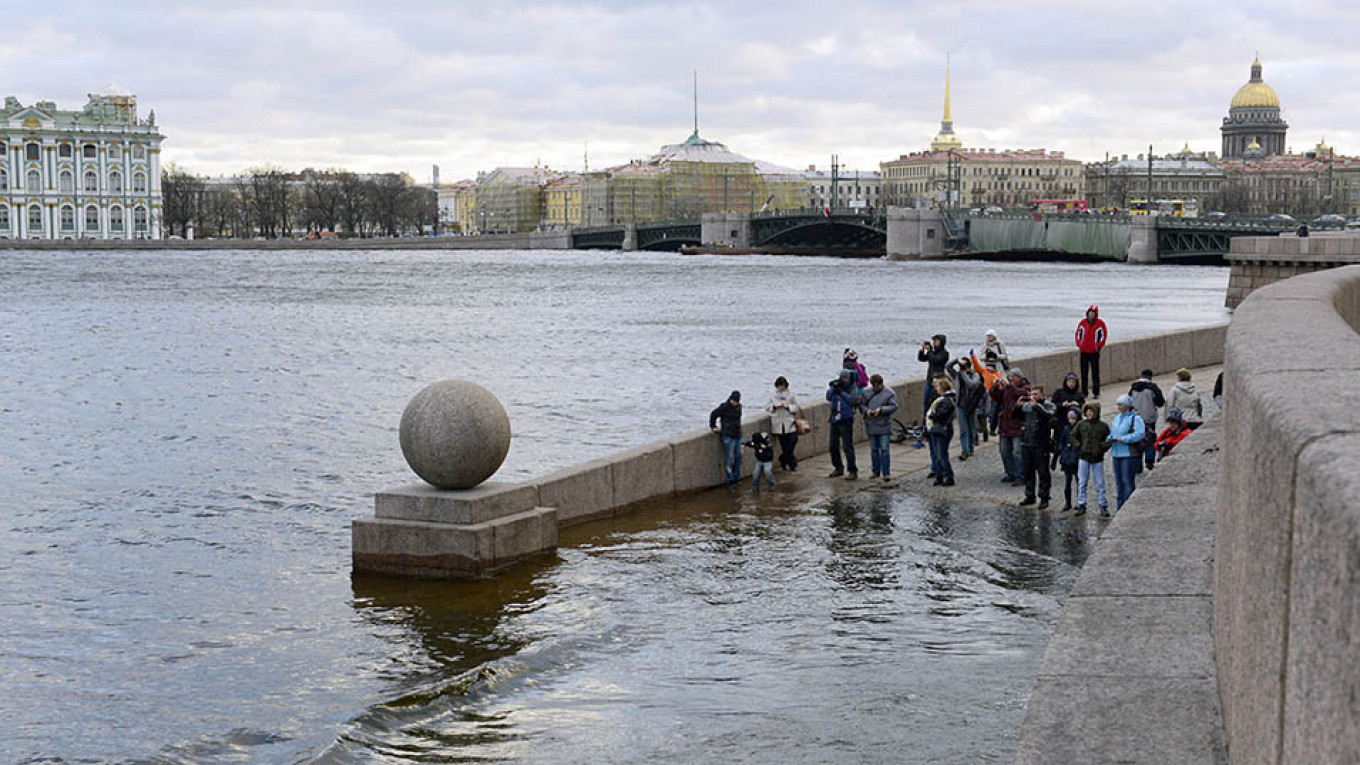
While local scientists vary in their estimates, St. Petersburg’s environmental committee predicts that the number of storm surges in St. Petersburg could increase by 40 percent by the end of the century. With the dam already under pressure, Drugachuk, the dam spokesperson, says the complex might not cope with the challenge posed by a changing climate.
The complex was built to last 100 years because, theoretically, nothing would change in that time.
“The complex was built to last 100 years because, theoretically, nothing would change in that time,” Drugachuk told The Moscow Times. “But if the climate changes, it is possible that the complex will have to be rebuilt.”
On top of this, weather officials are noting that the Neva Bay is freezing over later each year, making the city more vulnerable to storm surges, according to Ivan Serebritsky, the vice-chairman of the local environmental committee.
“Before, the frozen surface of the bay would stop the storm surges that came with cyclones in the winter,” he says.
According to Kattsov, the climate scientist, it isn’t the number, but the power of storm surges that matters.
“It only takes one massive storm surge to wash everything away,” he says. “Remember the Biblical flood?”
Preventative measures
Among the lowest-lying central districts of St. Petersburg are Vasilyevsky Island, the Petrograd Side and the historical neighborhoods between St. Isaac’s Cathedral and the Winter Palace. “If the Hermitage Museum is suddenly flooded, the damage would be impossible to measure,” says Kattsov.
To protect the historic center, a UNESCO World Heritage site home to some of Russia’s most prized cultural treasures, the city has integrated a pioneer climate strategy program into its long-term development plan that focuses on adaptation strategies.
Implementing those strategies is an urgent matter, says Serebritsky. “Storm surges seriously impact the city’s shores, wash away our beaches, our islands and anything else that they can,” he says, adding that coastal erosion would cost the city some 20 billion rubles in the next five years if preventive measures are not taken.
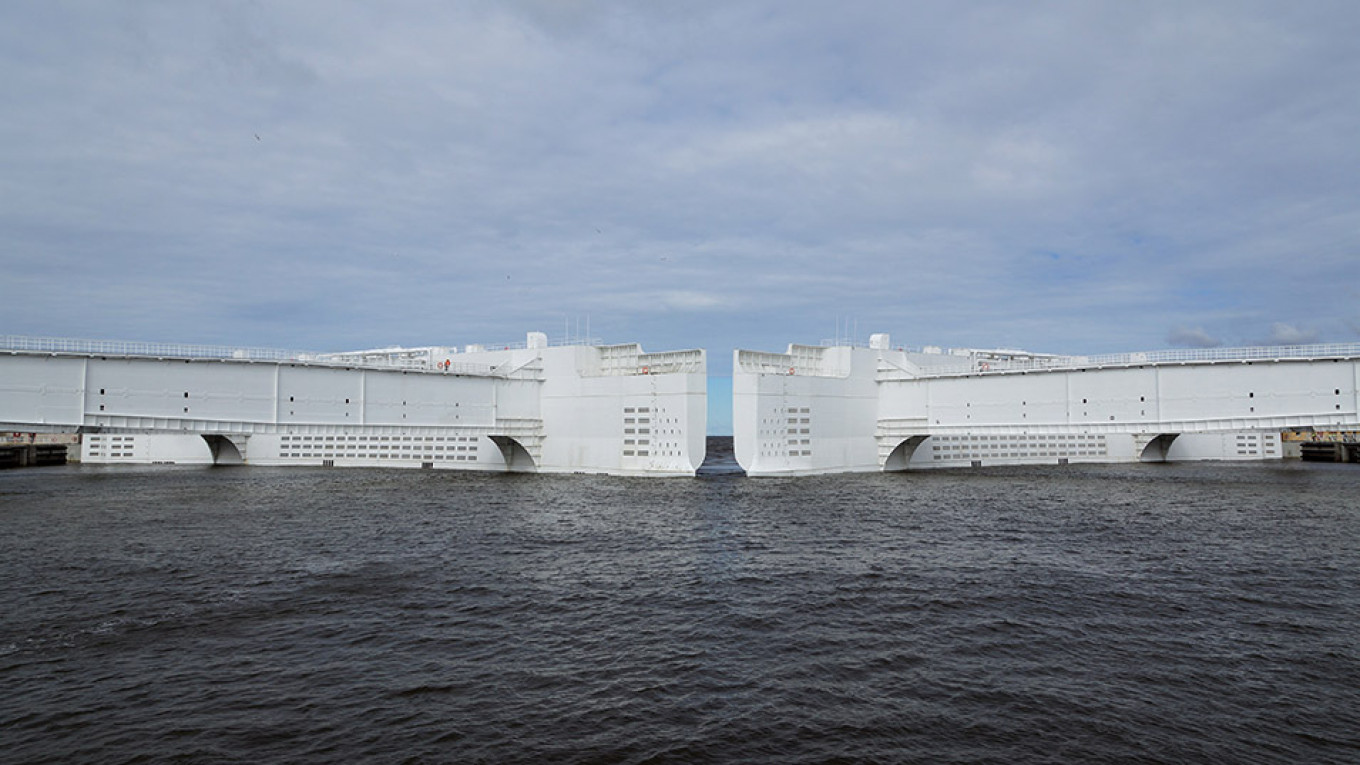
The city administration has started some of the work already, including developing new drainage systems in a cross-border program with Finland to cope with heavier snows and rainfall, as well as coastal defense systems.
Serebritsky also notes that the city has massively reduced its greenhouse gas emissions in the past 15 years by switching to natural gas fuel for municipal heating systems. Of the 279 boiler stations in the city, 246 have switched to natural gas, with the rest powered by coal, fuel oil and diesel.
"There’s not much more that we can do [to reduce greenhouse gas emissions] apart from what we’ve already done,” he says.
Short-sighted vision
St. Petersburg is ahead of the rest of Russia in confronting the negative effects of climate change, environmental activists admit.
“The problem of climate change is taken much more seriously in St. Petersburg than in Moscow or other Russian cities,” says Alexei Kokorin, the head of the Climate and Energy Program at the World Wildlife Fund, “simply because it is much more vulnerable.”
But, Kokorin adds, the city so far has focused mainly on countering immediate threats. “Russia is adapting more quickly to short-term problems, but it is a lot harder to accept that there is a need to reduce emissions and that humans are strongly contributing to climate change."
Back on the shores of the bay, Drugachuk shows off the dam’s control center, which offers a picturesque view of St. Petersburg’s landmarks in the distance.
“We are working to defend the city based on proven technologies,” he says. “As sad as it sounds, we work with what we have. As for the future — that’s the business of scientists.
“For now, the complex is prepared to save the city from the rising tide,” Drugachuk says. “But what happens in 100 years, that will be for our grandchildren and great-grandchildren to decide.”
A version of this article appeared in our special "Russia in 2019" print issue. For more in the series, click here.
A Message from The Moscow Times:
Dear readers,
We are facing unprecedented challenges. Russia's Prosecutor General's Office has designated The Moscow Times as an "undesirable" organization, criminalizing our work and putting our staff at risk of prosecution. This follows our earlier unjust labeling as a "foreign agent."
These actions are direct attempts to silence independent journalism in Russia. The authorities claim our work "discredits the decisions of the Russian leadership." We see things differently: we strive to provide accurate, unbiased reporting on Russia.
We, the journalists of The Moscow Times, refuse to be silenced. But to continue our work, we need your help.
Your support, no matter how small, makes a world of difference. If you can, please support us monthly starting from just $2. It's quick to set up, and every contribution makes a significant impact.
By supporting The Moscow Times, you're defending open, independent journalism in the face of repression. Thank you for standing with us.
Remind me later.



